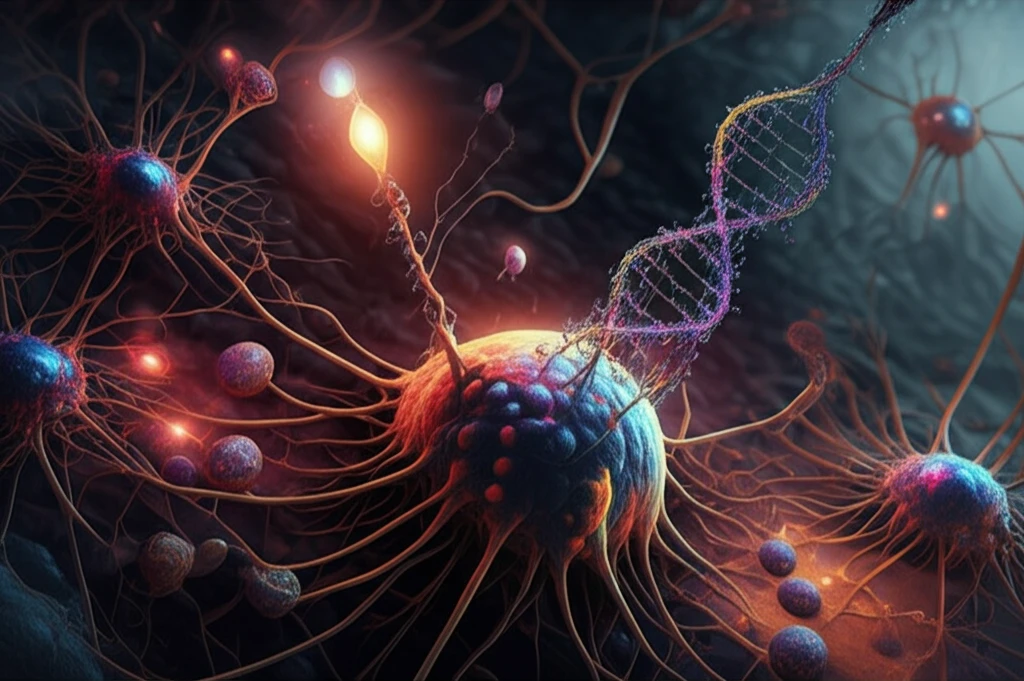
Decoding Your Immune System: The Surprising Role of Dlg2 in Fighting Infections
"Scientists uncover a new form of Dlg2 that could revolutionize how we understand and treat immune responses, especially in those fighting off viral infections."
Our immune system is a complex network, constantly working to protect us from harm. Among its many components, dendritic cells (DCs) play a vital role. Think of them as the scouts of our immune system, identifying threats and signaling the troops to action. Within the DC family, plasmacytoid dendritic cells (pDCs) are the specialized rapid responders, particularly skilled at producing large amounts of type I interferons (IFNs) to fight off viral infections.
For years, scientists have been unraveling the intricacies of these immune cells, seeking to understand how they function and how we can better harness their power. Now, a new study has shed light on a previously underappreciated protein called Dlg2 and its surprising role in the function of these crucial pDCs.
The groundbreaking research has identified a novel variant of Dlg2, revealing how it operates differently within pDCs. This discovery not only enriches our understanding of the immune system but also opens new avenues for potential therapeutic interventions. Imagine being able to fine-tune our immune responses to more effectively combat viral invaders – this research brings that future closer than ever.
What Is Dlg2 and Why Should You Care?

Dlg2, or Discs large homolog 2, is a member of the MAGUK (membrane-associated guanylate kinase) protein family. These proteins are like molecular organizers, bringing together receptors and signaling molecules on cell membranes. In the brain, Dlg2 helps cluster important channels and receptors at synapses, which are critical for nerve cell communication. Until now, its role in immune cells was largely unknown.
- Novel Splice Variant: The identification of Dlg2n, a new form of Dlg2, adds a new layer to our understanding of gene expression in immune cells.
- IFNβ Production: Dlg2's heightened presence in IFNβ-producing pDCs highlights its importance in antiviral immune responses.
- Unique Expression: Unlike other immune or brain cells, pDCs feature a distinctive Dlg2 splicing pattern, emphasizing their specialized nature.
What Does This Mean for Future Treatments?
This research opens exciting new possibilities for immunotherapy, the strategy of harnessing the immune system to fight disease. Understanding the specific role of Dlg2n in pDCs could lead to the development of targeted therapies that boost the body's natural ability to combat viral infections. While much remains to be explored, this discovery marks a significant step forward in our quest to unlock the full potential of the immune system. The newly identified Dlg2n isoform presents a promising avenue for future research and therapeutic development, offering hope for more effective strategies against viral diseases and other immune-related conditions. Further studies are needed to fully elucidate the functional role of this isoform in pDCs and other myeloid cells, as well as neurons, but the initial findings are undoubtedly encouraging.
